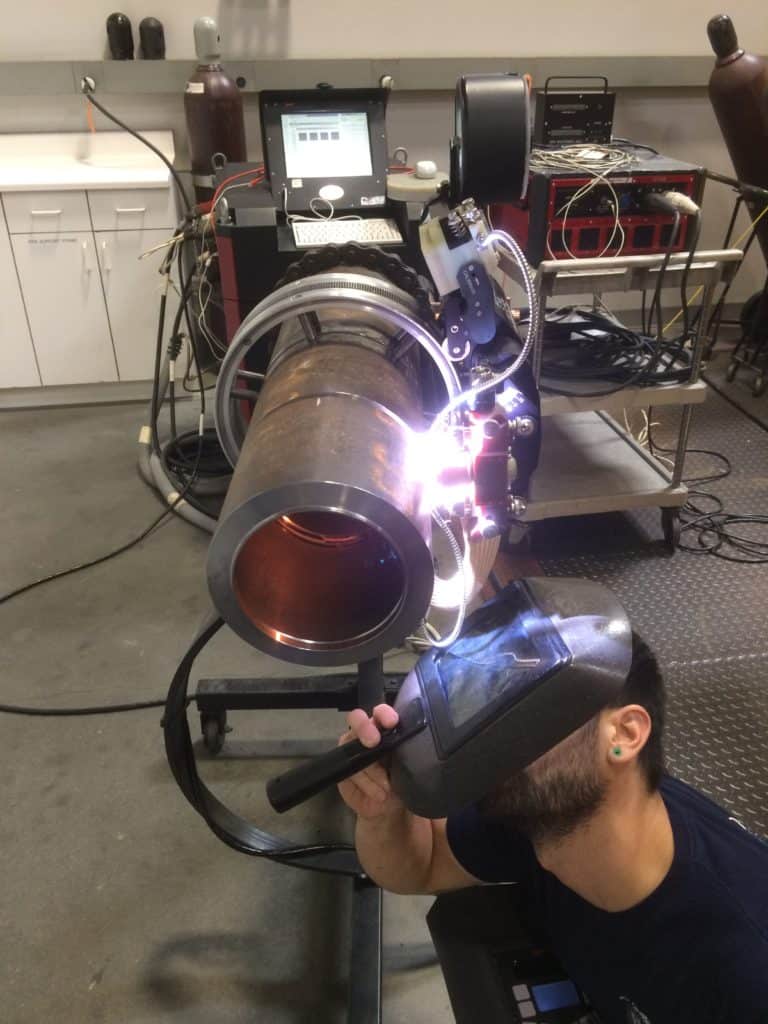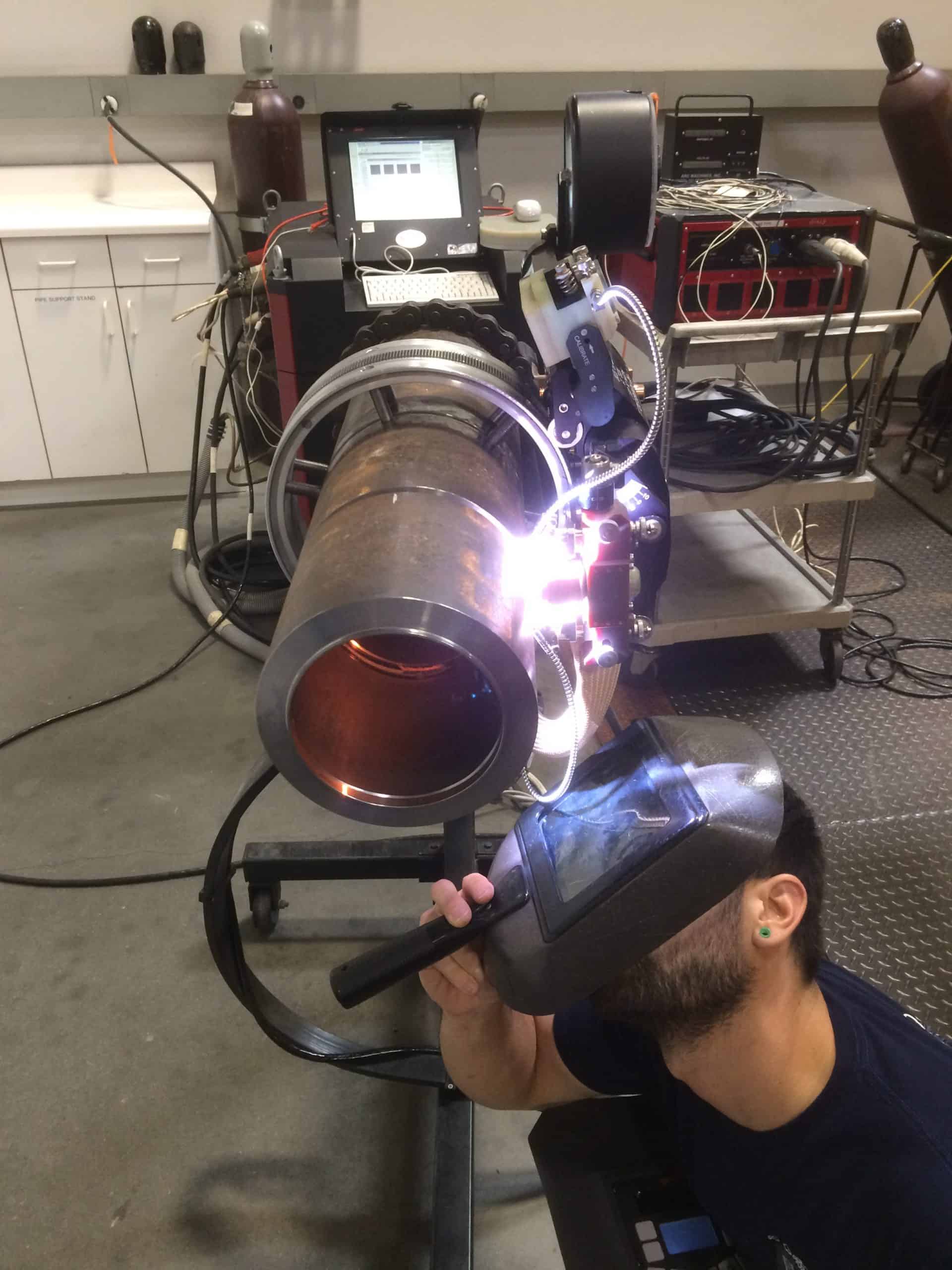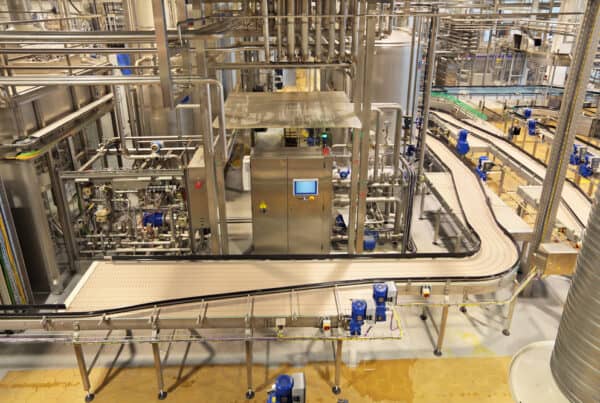
By its very nature, the orbital TIG welding process poses fewer hazards than most manual welding methods. Non-consumable electrodes, fully enclosed weld heads, remote vision systems, and mechanized control of the welding process can all reduce the health and safety risks associated with welding. Nonetheless, orbital welding hazards do exist, and the relative safety of the orbital welding process may make some welders less serious about the risks involved. Being aware of common safety issues prepares operators to take appropriate measures to reduce risks. We address four of the major hazards of orbital welding below and offer solutions to avoid them.
1. Harmful Fumes and Inert Gases
The welding process can produce harmful fumes and gas by-products, depending on the types of metals being joined, the filler metal used, and the mixture of shielding gases. Welding location (indoors or outside), air circulation, and ventilation (or lack thereof) also factor into the creation of a potentially hazardous welding environment.
Hexavalent chromium is of particular concern in orbital welding operations since TIG welding, including orbital TIG welding, is often used to join pipes and tubing made of stainless steel or other nonferrous alloys containing chromium. In the welding process, chromium in the metal is converted to its hexavalent state, Cr(VI), which is highly toxic and potentially damaging to the nose, throat, lungs, skin, and eyes. Hexavalent chromium is also considered a carcinogen.
Exposure to certain fumes generated by orbital welding can result in dizziness or nausea. Exposure to zinc oxide (from galvanized steel), aluminum oxide, or magnesium oxide fumes produced by welding can lead to metal fume fever, which causes flu-like symptoms.
Inert gases used in the orbital welding process also present a potential hazard in confined or enclosed spaces with poor ventilation. Argon and helium displace oxygen, and, although it’s a rare occurrence, welders should pay careful attention to the possibility of suffocation in enclosed workspaces.
To minimize these potentially harmful effects, welders should:
- Understand the hazards of the specific materials used in a particular welding process and know how to mitigate the effects of toxic fumes and inert gases.
- Properly prepare welding surfaces to ensure they are free of coatings, paint, oil, rust, or residue that could create toxic fumes.
- Employ exhaust ventilation systems such as hoods, extractor guns, and vacuum nozzles positioned close to the workpiece to remove fumes.
- Avoid confined spaces with inadequate ventilation. If necessary, wear proper respiratory equipment such as a powered air-purifying respirator.
In some situations, such as when the welding environment is truly hazardous due to very limited workspace or inadequate ventilation, the remote management and control capabilities of orbital welding systems can offer a solution with minimal risk. The joint can be prepared, the welding head set up, and a weld viewing system staged in the confined environment. Once setup is finished, the operator remotely initiates the welding schedule, controlling and monitoring the process from another location until it is safely completed.
2. Radiation Hazard
Orbital welding relies on a high amperage delivered via the electrode. With a current of 200 amps pulsing up to 400 amps, the welding arc produces radiation over a broad range of wavelengths, including UV radiation that can damage unprotected skin. Operators should wear appropriate head protection, such as a helmet and hood, and thick, heavy, non-flammable apparel, such as sleeves, gloves, and a jacket, to protect skin from UV radiation, whether emitted directly from the arc or reflected from surrounding metal surfaces.
3. Glare Hazard
UV radiation and infrared radiation (IR) emitted by the weld arc can also damage eyes. Certain types of UV radiation can injure the surface and mucous membrane of the eye causing conjunctivitis (commonly known as “arc flash” or “welding flash”), and can also damage the retina. Prolonged exposure to IR may result in gradual but irreversible opacity of the eye’s lens. The intensity of the radiation, distance from the welding arc, and the exposure time all factor into the severity of welding-related eye damage. A few seconds of intense UV radiation can result in arc flash that may not be noticed until several hours later. Auto-darkening helmets adjust to the arc intensity and welding environment—whether in-shop or outdoors—to protect a welder’s eyes.
4. Inadequate Electrical Infrastructure
Every component of an orbital welding system’s electrical circuit, beginning with the shop circuit breakers and finishing with the welding controller, should be checked to ensure they meet the codes and standards set by the Occupational Safety and Health Administration and National Electrical Code and that they can handle the required load. An independent circuit equipped with a properly sized circuit breaker should be used and the plug and cord connected to the power supply should be in good working order and designed to handle the input voltage, which will be anywhere from 110 to 575 volts. Aging or poorly designed electrical infrastructure can result in a ground fault, equipment failure, or fire. The local power utility or a qualified electrician will be able to assess a location’s existing electric infrastructure and recommend any necessary improvements.
To Avoid Orbital Welding Hazards, Start With Training
There’s no substitute for proper training on the specific orbital welding equipment and techniques being used on a particular job. In fact, this is one of the best ways to mitigate orbital welding hazards. A thorough training program provides a solid foundation for understanding the capabilities and limitations of your orbital welding equipment, as well as basic operational safety. Equipment manufacturers typically offer classes in orbital welding, and may also provide operator training manuals as a handy reference. OSHA also provides a wealth of information regarding health and safety regulations related to the welding industry. It’s important to keep in mind that not only welders need to be aware of safety hazards. Anyone passing through a welding shop should be warned of the potential dangers and made to wear appropriate protection when necessary. With proper training and daily attention to the factors that affect welding safety, the risks of orbital welding can be minimized, if not eliminated.
Arc Machines, Inc. has the welding experts, high-quality products, and reliable services to minimize hazards on your next weld project. For inquiries regarding products, contact sales@arcmachines.com. For service inquiries, contact service@arcmachines.com. Arc Machines welcomes the opportunity to discuss your specific needs. Contact us to arrange a meeting.





